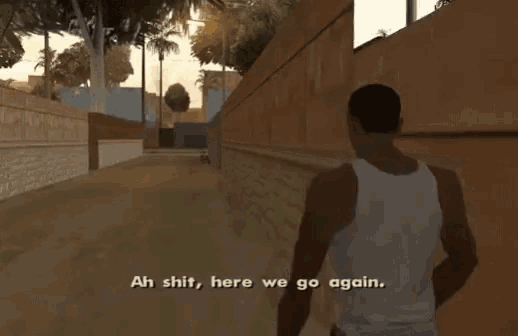- 18,936
- 27,728
Intro
This is a revisit of this thread for this calc that highkey just died off without ever reaching a solid conclusion.
Argument
The claim here is that the circular forest we see with the river running through it is the Forest of Death. The argument as for why that circular forest would be the FoD is simply an abduction argument, aka making a logical inference based upon what is most likely true from a set of observations, aka a claim on likelihood. The FoD is a nigh-perfect circular forest with a river running through it, the forest outside Konoha is a nigh-perfect circular forest with a river running through it. Given that the chances of there being two nigh-perfect circular forests existing near Konoha is extremely unlikely, as such phenomena is very rare, it is more likely that they are intended to be the same forests, i.e. that forest outside Konoha is the FoD.
One of the primary counter arguments was that the map was not 1:1 with the actual forest itself. However, map depictions and specifically one's that are so blatantly not realistically accurate (as the FoD map depiction is rather cartoonishly depicted) are just not 1:1 with the real world. In fact, they aren't even meant to be 1:1, they're meant to artistically convey key points of an area being mapped. And in this case the key points are that the FoD is a circular forest with a river running through it, with a tower buried somewhere in the center of the forest, and the radius is 10 km. Furthermore, just to emphasize the map not being 1:1, if we did assume the map was 1:1 with reality, we'd have to concede that trees in Naruto are multiple km tall and wide, which just isn't the case. We do see the river splits at the southern end of the map; however, we cannot use the map to accurately deduce how big the split between the river is (given we've established that the objects in the map aren't drawn to scale). As such, the actual image of the FoD not showing a noticeable split can simply be because the perspective is in such a manner (tilted and very far away) that the split in the river cannot be seen from that perspective.
The other primary counter argument was that Konoha is not depicted visually as consistently larger than a 20 km wide forest. I think this is a little disingenuous, since the only other time we get a wide shot of Konoha is when Pain goes and destroys the village. So, in terms of establishing shots that display the village in comparison to something of known size, we only have the single image of it by the FoD. Furthermore, the currently accepted means of calculating Konoha's size revolve around us using one panel to compare someone to the Kage Mt. Rushmore, then another panel to compare that to Konoha. Meaning that our current size asserts that Kishimoto stayed consistent in sizes between these multiple pages and panels, which by far introduces more room for error. Especially when compared to a depiction that is intended to serve as an establishing shot for the setting. I'd also argue that the author intent here trumps the fan calc assumptions as well, we make concessions for fiction all the time when it comes to realism (FTL anything, AP vs DC, etc etc etc). So when it comes to an author having inconsistent visual depictions of something, but a stated size, I do believe we can claim that the stated size is far more likely what the author intended for his series.
Conclusion
Based on the above I think we should either A) flat out upgrade Konoha's size or B) treat this FoD Konoha size as a "likely" size for Konoha given it falls under the pervue of having notable evidence and likelihood in support of the claim.
Agree: Tracer (option A), Slayer (option A), Glass (option A), Mitch (option A), DDM (option A), Lephyr (possibly)
Neutral: Griff
Disagree: Damage, Qawsdef, DT
This is a revisit of this thread for this calc that highkey just died off without ever reaching a solid conclusion.
Argument
The claim here is that the circular forest we see with the river running through it is the Forest of Death. The argument as for why that circular forest would be the FoD is simply an abduction argument, aka making a logical inference based upon what is most likely true from a set of observations, aka a claim on likelihood. The FoD is a nigh-perfect circular forest with a river running through it, the forest outside Konoha is a nigh-perfect circular forest with a river running through it. Given that the chances of there being two nigh-perfect circular forests existing near Konoha is extremely unlikely, as such phenomena is very rare, it is more likely that they are intended to be the same forests, i.e. that forest outside Konoha is the FoD.
One of the primary counter arguments was that the map was not 1:1 with the actual forest itself. However, map depictions and specifically one's that are so blatantly not realistically accurate (as the FoD map depiction is rather cartoonishly depicted) are just not 1:1 with the real world. In fact, they aren't even meant to be 1:1, they're meant to artistically convey key points of an area being mapped. And in this case the key points are that the FoD is a circular forest with a river running through it, with a tower buried somewhere in the center of the forest, and the radius is 10 km. Furthermore, just to emphasize the map not being 1:1, if we did assume the map was 1:1 with reality, we'd have to concede that trees in Naruto are multiple km tall and wide, which just isn't the case. We do see the river splits at the southern end of the map; however, we cannot use the map to accurately deduce how big the split between the river is (given we've established that the objects in the map aren't drawn to scale). As such, the actual image of the FoD not showing a noticeable split can simply be because the perspective is in such a manner (tilted and very far away) that the split in the river cannot be seen from that perspective.
The other primary counter argument was that Konoha is not depicted visually as consistently larger than a 20 km wide forest. I think this is a little disingenuous, since the only other time we get a wide shot of Konoha is when Pain goes and destroys the village. So, in terms of establishing shots that display the village in comparison to something of known size, we only have the single image of it by the FoD. Furthermore, the currently accepted means of calculating Konoha's size revolve around us using one panel to compare someone to the Kage Mt. Rushmore, then another panel to compare that to Konoha. Meaning that our current size asserts that Kishimoto stayed consistent in sizes between these multiple pages and panels, which by far introduces more room for error. Especially when compared to a depiction that is intended to serve as an establishing shot for the setting. I'd also argue that the author intent here trumps the fan calc assumptions as well, we make concessions for fiction all the time when it comes to realism (FTL anything, AP vs DC, etc etc etc). So when it comes to an author having inconsistent visual depictions of something, but a stated size, I do believe we can claim that the stated size is far more likely what the author intended for his series.
Conclusion
Based on the above I think we should either A) flat out upgrade Konoha's size or B) treat this FoD Konoha size as a "likely" size for Konoha given it falls under the pervue of having notable evidence and likelihood in support of the claim.
Agree: Tracer (option A), Slayer (option A), Glass (option A), Mitch (option A), DDM (option A), Lephyr (possibly)
Neutral: Griff
Disagree: Damage, Qawsdef, DT
Last edited:










